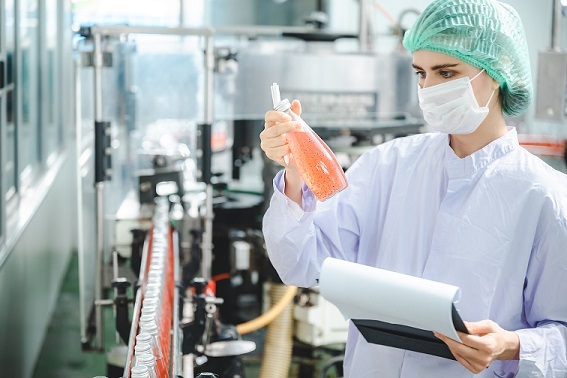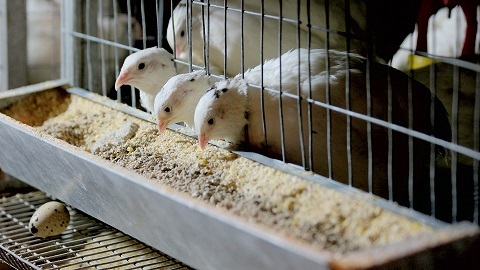
 Data Structure
Data Structure Networking
Networking RDBMS
RDBMS Operating System
Operating System Java
Java MS Excel
MS Excel iOS
iOS HTML
HTML CSS
CSS Android
Android Python
Python C Programming
C Programming C++
C++ C#
C# MongoDB
MongoDB MySQL
MySQL Javascript
Javascript PHP
PHP
- Selected Reading
- UPSC IAS Exams Notes
- Developer's Best Practices
- Questions and Answers
- Effective Resume Writing
- HR Interview Questions
- Computer Glossary
- Who is Who
Role of Microbial Enzymes in Various Industrial Processes
Introduction
Many different areas of the food industry, including dairy, baking, food processing and packaging, animal feed, fruit and vegetable juice, beverages, oil refinery, and confectionery, have found a use for microbial enzymes.
Microorganisms are preferred sources for industrial enzymes because they are readily available and have a rapid rate of development. Microbial cells can easily undergo genetic modifications using recombinant DNA technology for increased enzyme output and scientific advancement.

Role of Microbial Enzymes in Industries
The use of commercial enzymes is more economical, and it is possible to genetically modify bacteria to create better and more stable enzymes on a large scale. This has led numerous sectors to adopt enzyme production techniques in place of chemical-based ones.
Industrial-scale enzyme manufacturing for a variety of industrial applications is in high demand. The fact that some production settings might be quite difficult for enzymes to function at their best is a disadvantage for the usage of enzymes in industry.
Many enzymes are used in various bioprocesses to produce a variety of products for applied industries.
Applications of Enzymes in Different Industries
Pharmaceutical and Analytical Industry
In the pharmaceutical and diagnostic sectors, enzymes play numerous important and crucial roles. They are widely employed in diagnostic procedures like ELISA and diabetes testing kits, as well as therapeutic medications for conditions linked to enzyme deficiency and digestive disorders.
Applications of enzymes in medicine are as varied and expanding every day. A potent fibrinolytic enzyme called nattokinase (EC 3.4.21.62) is a potential treatment for thrombosis.
For research and development in the field of genetic engineering, enzymes are essential for nucleic acid manipulation. For example, restriction endonucleases are employed for site-specific DNA cleavage for molecular cloning and DNA polymerases for DNA amplification by polymerase chain reaction (PCR).
Food Industry
Enzymes are used in the beverage and food industries to increase juice yield, improve color and aroma, and control the brewing process to produce consistent, high-quality beer. They are also used to enhance the functional and nutritional properties of animal and vegetable proteins through enzymatic hydrolysis.
Baking Industry
Baking enzymes are used to increase the flour, stabilize the dough, improve texture, volume, and color, prolong crumb softness, maintain uniform crumb structure, and extend bread freshness. Enzymes are viewed as natural solutions in the baking industry today to satisfy the growing demand for quality.

Dairy Industry
Dairy enzymes are used to improve the aroma, flavor, and color of milk products as well as their yield. Proteases, lipases, esterases, lactase, aminopeptidase, lysozyme, lactoperoxidase, transglutaminase, catalase, and other enzymes are used in the dairy industry to extend the shelf life and ensure the safety of dairy products.
These enzymes range from coagulants to bio-protective enzymes. For the manufacturing of cheese, yogurt, and other milk products, dairy enzymes are used.
Beverages Industry
Breweries employ enzymes as processing aids to create reliable, high-quality products. Microbial enzymes are employed to break down plant cell walls during plant material extraction to produce products with better yield, color, and aroma.
Feed Industry
In the production of an animal's feed, enzymes are used. to break down particular feed components that might otherwise be toxic or without nutritional benefit. Also, the use of feed enzymes may improve the protein and nutritional content of the poultry.
Example - Phytases, proteases, -galactosidases, glucanases, xylanases, -amylases, and polygalacturonases are the principal enzymes utilized in poultry feed.

Polymer Industry
The use of microbial enzymes for the manufacture of the biodegradable polymer has become more common due to increased polymer use.
Biopolymers are environmentally gentle materials because they are created via biological processes from renewable carbon sources, that break down naturally after use, and then are released back into the environment as renewable resources like CO2 and biomass.
Biopolymers, like polyesters, polycarbonates, and polyphosphates, are employed in a variety of biomedical applications, including adhesion barriers, orthopedic devices, tissue engineering, and drug delivery control. Lipase is the enzyme used in the polymer industry.
Paper and Pulp Industry
Xylanases and ligninases are two enzymes employed in the paper and pulp industries to increase the value of the pulp. Uses for amylases in these sectors include coating starch, deink, enhancing paper cleanliness, and enhancing drainage.
Cellulases are also used for deinking, improving softness, and improving drainage, whereas lipases are utilized for deinking and improving pitch control. The development of a bioprocess for recycling discarded printed materials also includes cellulase.
Leather Industry
Enzymes are needed for various stages of leather processing, including curing, soaking, liming, dehairing, bating, picking, degreasing, and tanning, in order to speed up the process and improve leather quality.
Alkaline protease, neutral protease, and lipase are the enzymes used in the leather industry. In order to make leather soft, elastic, and malleable during soaking and bating, alkaline proteases are utilized to eliminate non-fibrillar proteins.
Textile Industry
Hydrolase and oxidoreductase are the two primary kinds of enzymes used in the pre-treatment and finishing of cotton. Amylase, cellulase, cutinase, protease, pectinase, and lipase/esterase are among the hydrolases that are used in the biopolishing and bioscouring of fabric, wool felting prevention, cotton softening, denim finishing, de-sizing, wool finishing, and other processes.
Catalase, laccase, peroxidase, and ligninase are among the enzymes of the oxidoreductase group that are used in bio-bleaching, bleach termination, dye decolorization, fabric finishing, wool finishing, and other processes.

Detergent and Cosmetic Industry
Detergent products contain enzymes to help them work more efficiently and remove protein, carbohydrate, oil, and fat-based stains. The weight-effective enzymes in laundry detergents increase whiteness, color, and fabric care by removing damaged cotton fibers. Examples are proteases, amylases, pectinases, cellulases, and lipases.
Enzymes are employed as free radical scavengers in toothpaste, mouthwash, hair color, and sunscreen cream. Superoxide dismutase is utilized to stop free radicals and manage skin damage brought on by bacteria, air and water pollution, and other toxic elements.
In sunscreen cream, SOD and peroxidases work together as free radical scavengers to lessen erythema. By removing damaged or dead skin, proteases are utilized in skin creams to clean and smoothen the skin.
Waste Management
The use of enzymes for waste management is widespread. Both home and industrial trash contain a variety of chemical products that are harmful or dangerous to ecosystems and living things. Industrial effluents comprising phenol, aromatic amines, nitriles, etc. are treated using a microbial enzyme(s), either alone or in combination.
Conclusion
Since microbial enzymes have significant potential use in numerous industries to meet the demands of a population that is rapidly expanding, their industrial applications have significantly increased and are still growing in the twenty-first century.

